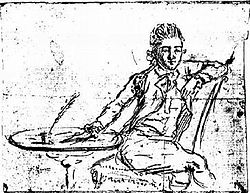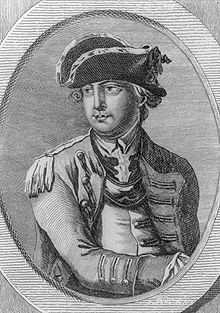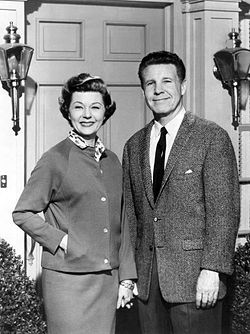October 2 is the 275th day of the year (276th in leap years) in the Gregorian calendar. There are 90 days remaining until the end of the year. 83 days till Christmas.
Hurricane Sergio was a powerful and long-lived tropical cyclone that hit the Baja California Peninsula as a tropical storm and caused flooding throughout southern Texas in early October 2018. Sergio became the eighth Category 4 hurricane in the East Pacific for 2018, breaking the record of seven set in the 2015 season. The twentieth named storm, eleventh hurricane, and ninth major hurricane of the season, Sergio organized into a tropical storm on September 29 and became a hurricane on October 2. It peaked as a Category 4 hurricane on October 4, with reported maximum sustained winds of 140 mph (220 km/h). It maintained peak intensity for 12 hours before weakening. The system then began another period of intensification, achieving a secondary peak with reported winds of 125 mph (205 km/h) on October 6. It made landfall in western Baja California Sur on October 12, caused over US 2 million in damage, and triggered over a thousand school closures.
Holidays
- Gandhi‘s birthday-related observances:
- Independence Day (Guinea), celebrates the independence of Guinea from France in 1958
- Mehregan, according to Iranian civil calendar (Iran)
History
In 829, Theophilos (813–842), succeeds his father as Byzantine Emperor.
In 1187, Siege of Jerusalem: Saladin captures Jerusalem after 88 years of Crusader rule.
In 1263, The battle of Largs is fought between Norwegians and Scots.
In 1470, A rebellion organised by Richard Neville, 16th Earl of Warwick forces King Edward IV of England to flee to the Netherlands, restoring Henry VI to the throne.
In 1535, Jacques Cartier discovers the area where Montreal is located.
In 1552, Conquest of Kazan by Ivan the Terrible.
In 1780, John André, British Army officer of the American Revolutionary War, is hanged as a spy by the Continental Army during the American War of Independence for assisting Benedict Arnold‘s attempted surrender of the fort at West Point, New York to the British. André was born on 2 May 1750 in London to wealthy Huguenot parents, Antoine André, a merchant from Geneva, Switzerland, and Marie Louise Girardot, from Paris, France. He was educated at St Paul’s School, at Westminster School and in Geneva. At age 20, he entered the British Army and joined his regiment, the 7th Royal Fusiliers, in Canada in 1774 as a lieutenant. He was captured at Fort Saint-Jean by General Richard Montgomery in November 1775, and held a prisoner at Lancaster, Pennsylvania. He lived in the home of Caleb Cope, enjoying the freedom of the town as he had given his word not to escape. In December 1776, he was freed in a prisoner exchange. He was promoted to captain in the 26th Foot on 18 January 1777, and to major in 1778.
He was a great favorite in colonial society, both in Philadelphia and New York, during their occupation by the British Army. He had a lively and pleasant manner and could draw, paint and cut silhouette pictures, as well as sing and write verse. He was a fluent writer who carried on much of General Clinton‘s correspondence. He was fluent in English, French, German, and Italian. He also wrote many comic verses. He planned the Mischianza when General Howe resigned and was about to return to England.
During his nearly nine months in Philadelphia, André occupied Benjamin Franklin‘s house, where it has been claimed that, on the orders of Major-General Charles Grey he took several valuable items from Franklin’s home, including an oil portrait of Franklin, when the British left Philadelphia. Grey’s descendants returned Franklin’s portrait to the United States in the early half of the 20th century.
In 1782, Charles Lee, English-American general (b. 1732) died. He served as a General of the Continental Army during the American War of Independence. Lee also served earlier in the British Army during the Seven Years War. After the war he sold his commission and served for a time in the Polish army of King Stanislaus II. In 1773 Lee, who had Whig views, moved to America and bought an estate in Virginia. When the fighting broke out in the American War of Independence in 1775 he volunteered to serve with rebel forces. Lee’s ambitions to become Commander in Chief of the Continental Army were thwarted by the appointment of George Washington.
During 1776, forces under his command repulsed a British attempt to capture Charleston, which boosted his standing with the army and Congress. Later that year he was captured by British cavalry under Banastre Tarleton and held as a prisoner until exchanged in 1778. During the decisive Battle of Monmouth later that year, Lee led an assault on the British which miscarried. He was subsequently court-martialed and his military service brought to an end. He died in Philadelphia in 1782.
In 1789, George Washington sends the proposed Constitutional amendments (The United States Bill of Rights) to the States for ratification.

In 1803, Samuel Adams, American politician, 4th Governor of Massachusetts (b. 1722) died at the age of 81. He was an American statesman, political philosopher, and one of the Founding Fathers of the United States. As a politician in colonial Massachusetts, Adams was a leader of the movement that became the American Revolution, and was one of the architects of the principles of American republicanism that shaped the political culture of the United States. He was a second cousin to President John Adams.
Born in Boston, Adams was brought up in a religious and politically active family. A graduate of Harvard College, he was an unsuccessful businessman and tax collector before concentrating on politics. As an influential official of the Massachusetts House of Representatives and the Boston Town Meeting in the 1760s, Adams was a part of a movement opposed to the British Parliament‘s efforts to tax the British American colonies without their consent. His 1768 circular letter calling for colonial non-cooperation prompted the occupation of Boston by British soldiers, eventually resulting in the Boston Massacre of 1770. To help coordinate resistance to what he saw as the British government’s attempts to violate the British Constitution at the expense of the colonies, in 1772 Adams and his colleagues devised a committee of correspondence system, which linked like-minded Patriots throughout the Thirteen Colonies. Continued resistance to British policy resulted in the 1773 Boston Tea Party and the coming of the American Revolution.
In 1804, Nicolas-Joseph Cugnot, French engineer (b. 1725) dies. He was a French inventor. He is known to have built the first working self-propelled mechanical vehicle, the world’s first automobile. This claim is disputed by some sources, however, which suggest that Ferdinand Verbiest, as a member of a Jesuit mission in China, may have been the first to build, around 1672, a steam-powered vehicle but that was too small to carry a driver or passengers.
In 1814, Battle of Rancagua: Spanish Royalists troops under Mariano Osorio defeats rebel Chilean forces of Bernardo O’Higgins and José Miguel Carrera.
In 1835, The Texas Revolution begins with the Battle of Gonzales: Mexican soldiers attempt to disarm the people of Gonzales, Texas, but encounter stiff resistance from a hastily assembled militia.
In 1864, American Civil War: Battle of Saltville – Union forces attack Saltville, Virginia, but are defeated by Confederate troops.
In 1889, In Colorado, Nicholas Creede strikes it rich in silver during the last great silver boom of the American Old West. Now this is an odd but interesting story.
In 1919, U.S. President Woodrow Wilson suffers a massive stroke, leaving him partially paralyzed.
In 1925, John Logie Baird performs the first test of a working television system.
In 1928, The “Prelature of the Holy Cross and the Work of God”, commonly known as Opus Dei, is founded by Saint Josemaría Escrivá.
In 1937, Dominican Republic strongman Rafael Trujillo orders the execution of the Haitian population living within the borderlands; approximately 20,000 are killed over the next five days.
In 1941, World War II: In Operation Typhoon, Germany begins an all-out offensive against Moscow.
In 1942, World War II: Ocean Liner RMS Queen Mary accidentally rams and sinks her own escort ship, HMS Curacoa, off the coast of Ireland.
In 1944, World War II: German troops end the Warsaw Uprising.
In 1950, Peanuts by Charles M. Schulz is first published.
In 1958, Guinea declares its independence from France.
In 1959, The anthology series The Twilight Zone premieres on CBS television.
In 1967, Thurgood Marshall is sworn in as the first African-American justice of United States Supreme Court.
In 1968, A peaceful student demonstration in Mexico City culminates in the Tlatelolco massacre by the order of the president, Gustavo Díaz Ordaz, to the soldiers of killing unarmed students, hiding the event from the public eye. The 1968 Summer Olympics hosted in Mexico City, started 10 days after the massacre.
In 1970, A plane carrying the Wichita State University football team, administrators, and supporters crashes in Colorado killing 31 people.
In 1973, Paul Hartman, American actor, singer, and dancer (b. 1904) died from a heart attack in Los Angeles at the age of sixty-nine. He was an American dancer, stage performer and television character actor. Born in San Francisco, California, Hartman, like Fred Astaire, began performing as a dancer with his sister. In 1922, he teamed up with Grace Barrett for a long and successful dancing comedy vaudeville act that consisted of them both paying homage to and gently mocking the popular dances of the day, from ballet to swing. The two married in 1927. Grace and Paul made their Broadway debut in Ballyhoo of 1932 alongside Bob Hope, but the show was not a success. They did find success with Cole Porter‘s Red Hot and Blue a few years later, and continued to flourish on the Great White Way. The main premise of their act involved the crisp and witty Grace overwhelming the gangly, slackjawed Paul, intermittently cut with dance numbers and musical comedy routines.
The Hartman’s bounced back and forth from Hollywood to New York during the forties finding better success in their 1948 play, Angel in the Wings, which was a smash success, and both Hartmans were named best lead performer at the first ever Tony Awards held that same year.
Grace was diagnosed with cancer in 1952. She died in 1955. Television and Hollywood had once again risen to the top of the entertainment world, and the convenience of television shooting and a quick paycheck lured Paul out to Los Angeles once more. Hartman began appearing in the 1953-1954 ABC situation comedy, The Pride of the Family, as Albie Morrison, the father and head of the household. Fay Wray, formerly on King Kong, played his wife, Catherine, and Natalie Wood and Robert Hyatt played his children, Ann and Junior Morrison, respectively.
He continued to play bit parts in movies and television throughout the rest of his life, most famously as handyman Emmett Clark on CBS‘s The Andy Griffith Show and Mayberry R.F.D. In a nod to his earlier life, he is seen doing a dance routine at Howard Sprague’s party in the Andy Griffith episode “The Wedding”, and in the Mayberry, RFD, episode “The Charity”, he can be seen doing a soft shoe routine with costar Ken Berry. In addition, he had small parts on Petticoat Junction, Love, American Style, The Adventures of Ozzie and Harriet, Hazel, Ben Casey, The Twilight Zone, The Alfred Hitchcock Hour, Our Man Higgins, and Family Affair. He was cast in the 1960 film, Inherit the Wind. In 1967, he appeared with Robert Morse in the film version of How To Succeed In Business Without Really Trying.
In 1979, Pope John Paul II denounces all forms of concentration camps and torture while speaking at the U.N. in New York City.

In 1980, Michael Myers becomes the first member of either chamber of Congress to be expelled since the Civil War. Myers is an American politician who served in the United States House of Representatives from 1976 to 1980. A member of the Democratic Party, Myers became involved in the Abscam scandal during his tenure in Congress and was later expelled from the House of Representatives after being caught taking bribes in an FBI sting operation. He spent three years in federal prison.
In 2020, he was accused of stuffing ballot boxes in Philadelphia elections during the 2010s, and charged with election fraud. He pled guilty in 2022, and was sentenced to 2+1⁄2 years in federal prison.
In 1985, Rock Hudson, American actor and singer (b. 1925) dies. He was an American actor. Although he was widely known as a leading man in the 1950s and 1960s, notably in romantic comedies opposite Doris Day, Hudson is also recognized for dramatic roles in films such as Giant and Magnificent Obsession. In later years, he found success in television, starring in the popular mystery series McMillan & Wife and the soap opera Dynasty.
Hudson was voted Star of the Year, Favorite Leading Man, and similar titles by numerous film magazines. The 6 ft 5 in (1.96 m.) tall actor was one of the most popular movie stars of his time. He completed nearly 70 films and starred in several television productions during a career that spanned over four decades. Hudson died in 1985, becoming the first major celebrity to die from an AIDS-related illness
In 1990, Xiamen Airlines Flight 8301 is hijacked and lands at Guangzhou, where it crashes into two other airliners on the ground, killing 128.
In 1992, The Carandiru massacre takes place after a riot in the Carandiru Penitentiary in São Paulo, Brazil.
In 1994, Harriet Nelson, American actress and singer (b. 1909) dies of congestive heart failure. She was an American singer and actress. Nelson is best known for her role on the long-running sitcom The Adventures of Ozzie and Harriet. She was born Peggy Louise Snyder in Des Moines, Iowa, the daughter of Hazel Dell (née McNutt) and Roy Hilliard Snyder. She appeared on the vaudeville stage when she was three years old and made her debut on Broadway in her teens. She left high school before graduating and joined the Corps de Ballet at the Capitol Theater, later dancing in the Harry Carroll Revue and working as a straight woman for comedians Ken Murray and Bert Lahr. By 1932, she was still performing in vaudeville when she met the saxophone-playing bandleader Ozzie Nelson. Nelson hired her to sing with the band, under the name Harriet Hilliard. They married three years later.
Hilliard had a respectable film career as a solo performer, apart from the band. RKO Radio Pictures signed her to a one-year contract in 1936, and she appeared in three feature films, the most famous being the Fred Astaire–Ginger Rogers musical Follow the Fleet. She was very much in demand during the World War II years for leading roles in escapist musicals, comedies, and mysteries.
In Ozzie Nelson’s book, he wrote that Harriet was quite popular during the short time at RKO and they wanted her to continue her solo film career, but decided that it was more important for her to continue with the band and subsequent radio show.
Although the couple occasionally appeared together in movies, either as a duo (in Honeymoon Lodge) or as separate characters (in Hi, Good Lookin’), they are best known for their broadcasting efforts. In 1944, the Nelsons began a domestic-comedy series for radio, The Adventures of Ozzie and Harriet. It was highly popular and made a successful transition to television. It was one of the stalwarts of the ABC-TV schedule from 1952 to 1966. The Nelsons’ two sons, Ricky and David, were featured continuously on the show.
In 1996, The Electronic Freedom of Information Act Amendments are signed by U.S. President Bill Clinton.
In 1996, Aeroperú Flight 603, a Boeing 757, crashes into the Pacific Ocean shortly after takeoff from Lima, Peru, killing 70.
In 2001, NATO backs U.S. military strikes following 9/11.
In 2002, The Beltway sniper attacks begin, extending over three weeks.
In 2005, Ethan Allen boating accident: The Ethan Allen tour boat capsizes on Lake George in Upstate New York, killing twenty people.
In 2006, Five school girls are murdered by Charles Carl Roberts in a shooting at an Amish school in Nickel Mines, Pennsylvania before Roberts commits suicide.
In 2007, President Roh Moo-hyun of South Korea walks across the Military Demarcation Line into North Korea on his way to the second Inter-Korean Summit with North Korean leader Kim Jong-il.
In 2016, Ethiopian protests break out during a festival in the Oromia region, killing dozens of people.
In 2018, The Washington Post journalist Jamal Khashoggi is assassinated in the Saudi consulate in Istanbul, Turkey.

In 2019, A privately-owned Boeing B-17 Flying Fortress conducting a living history exhibition flight crashes shortly after takeoff from Windsor Locks, Connecticut, killing seven.





